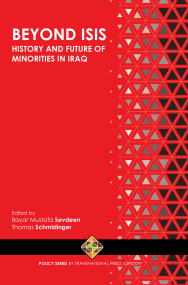Kakai Internal Displacement in Kirkuk and the Fear of Violence from the So-called Islamic State in Iraq (ISIS)
Kakai Internal Displacement in Kirkuk and the Fear of Violence from the So-called Islamic State in Iraq (ISIS)
Author(s): Seyedehbehnaz Hosseini
Subject(s): Politics, Geography, Regional studies, Military history, Security and defense, Studies in violence and power, Present Times (2010 - today), Ethnic Minorities Studies, Peace and Conflict Studies
Published by: Transnational Press London
Keywords: Iraq; ISIS; Kirkuk; Kakai; forced migration; minorities;
Summary/Abstract: The Kakai, also called Yārsan or Ahl-e Haqq, follow a religion that emerged thousands of years ago. Their monotheist religion has four principles: Pāki, Rīsti, Nīsti, and Radā. Kakai speak a distinct language called ‘Macho’, a Gūrani Kurdish dialect, and are famous for agriculture and shepherding. They show a strong passion for playing music, because music is an essential part of their religion and rituals. Originally, Kakai believe in Doon-a-Doon (life after death), where a soul passes 1,000 Doon within 50,000 years, and continuously moves from one body to another until it reaches perfection. They also believe that God manifested himself in different souls, such as Ali (the first Shia Imam) and Shah Khoshin, before embodying himself in the form of Sultan Sahak, the founder of the Kakai religion. Kakai also believe that after 1001 transmigrations, the soul comes back to an everlasting home, and everything becomes part of God . In every period, someone had a sense of God, and each period was called the ‘period of Yār’.
Book: Beyond ISIS: History and Future of Religious Minorities in Iraq
- Page Range: 189-196
- Page Count: 8
- Publication Year: 2019
- Language: English
- Content File-PDF

